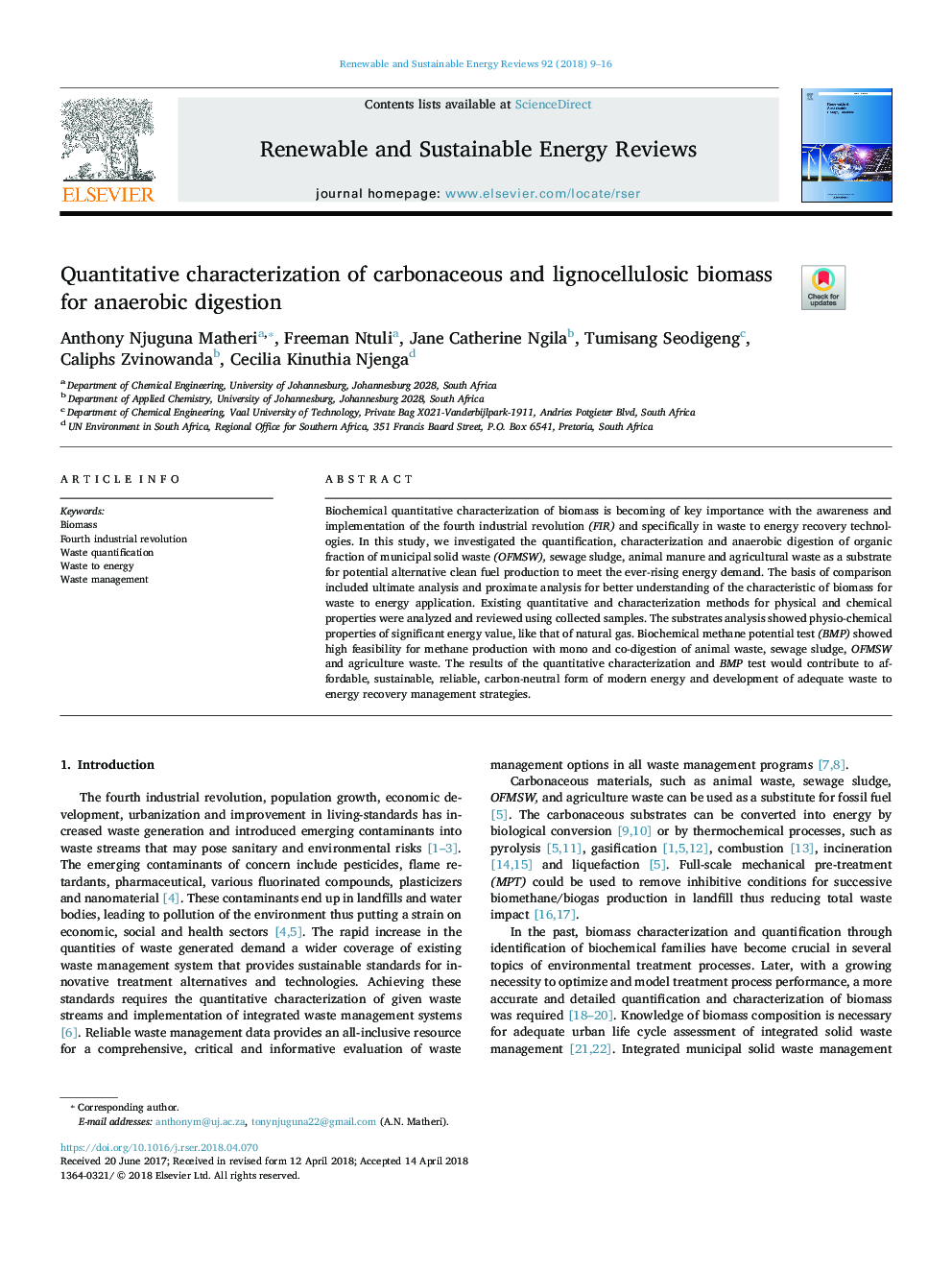| Article ID | Journal | Published Year | Pages | File Type |
|---|---|---|---|---|
| 8110822 | Renewable and Sustainable Energy Reviews | 2018 | 8 Pages |
Abstract
Biochemical quantitative characterization of biomass is becoming of key importance with the awareness and implementation of the fourth industrial revolution (FIR) and specifically in waste to energy recovery technologies. In this study, we investigated the quantification, characterization and anaerobic digestion of organic fraction of municipal solid waste (OFMSW), sewage sludge, animal manure and agricultural waste as a substrate for potential alternative clean fuel production to meet the ever-rising energy demand. The basis of comparison included ultimate analysis and proximate analysis for better understanding of the characteristic of biomass for waste to energy application. Existing quantitative and characterization methods for physical and chemical properties were analyzed and reviewed using collected samples. The substrates analysis showed physio-chemical properties of significant energy value, like that of natural gas. Biochemical methane potential test (BMP) showed high feasibility for methane production with mono and co-digestion of animal waste, sewage sludge, OFMSW and agriculture waste. The results of the quantitative characterization and BMP test would contribute to affordable, sustainable, reliable, carbon-neutral form of modern energy and development of adequate waste to energy recovery management strategies.
Related Topics
Physical Sciences and Engineering
Energy
Renewable Energy, Sustainability and the Environment
Authors
Anthony Njuguna Matheri, Freeman Ntuli, Jane Catherine Ngila, Tumisang Seodigeng, Caliphs Zvinowanda, Cecilia Kinuthia Njenga,
